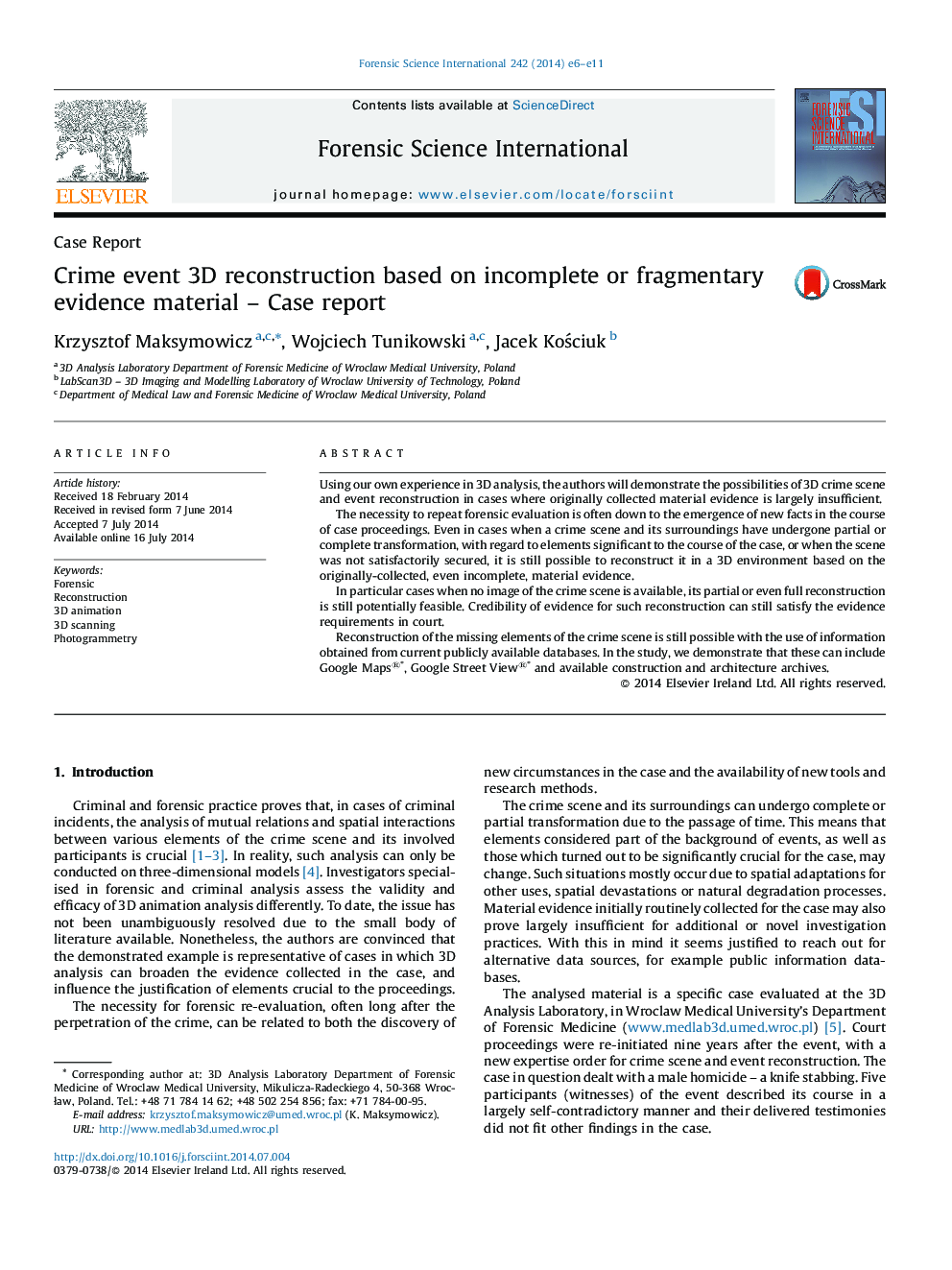| Article ID | Journal | Published Year | Pages | File Type |
|---|---|---|---|---|
| 95487 | Forensic Science International | 2014 | 6 Pages |
•Publicly available online data sources complemented fragmentary material evidence.•3D reconstruction could be used in further interdisciplinary specialist expertise.•The trial conductors evaluated 3D model as and feasible to apply in legal aspects.•3D reconstruction helped court to assess the probability of opposite testimonies.
Using our own experience in 3D analysis, the authors will demonstrate the possibilities of 3D crime scene and event reconstruction in cases where originally collected material evidence is largely insufficient.The necessity to repeat forensic evaluation is often down to the emergence of new facts in the course of case proceedings. Even in cases when a crime scene and its surroundings have undergone partial or complete transformation, with regard to elements significant to the course of the case, or when the scene was not satisfactorily secured, it is still possible to reconstruct it in a 3D environment based on the originally-collected, even incomplete, material evidence.In particular cases when no image of the crime scene is available, its partial or even full reconstruction is still potentially feasible. Credibility of evidence for such reconstruction can still satisfy the evidence requirements in court.Reconstruction of the missing elements of the crime scene is still possible with the use of information obtained from current publicly available databases. In the study, we demonstrate that these can include Google Maps®*, Google Street View®* and available construction and architecture archives.
